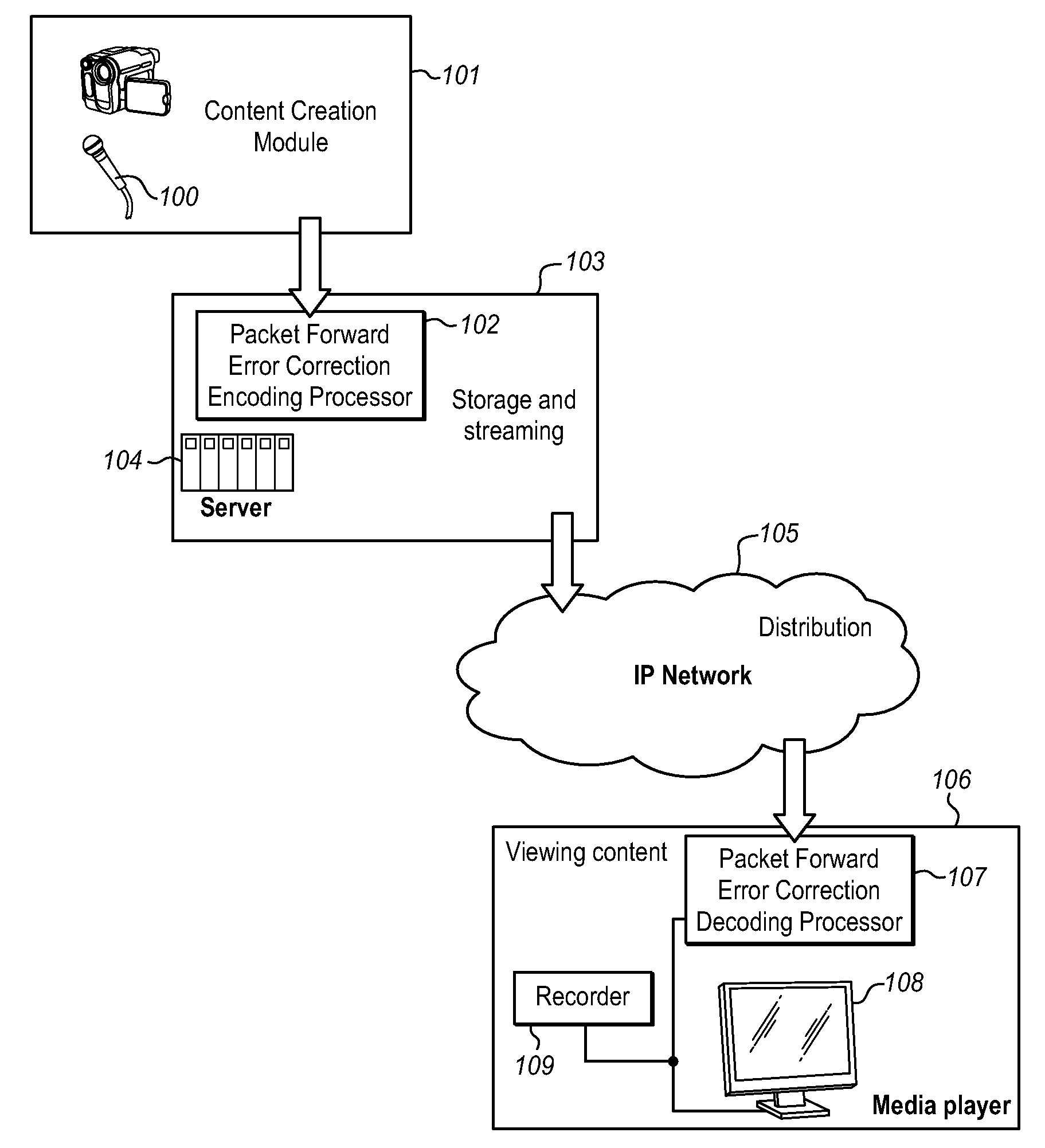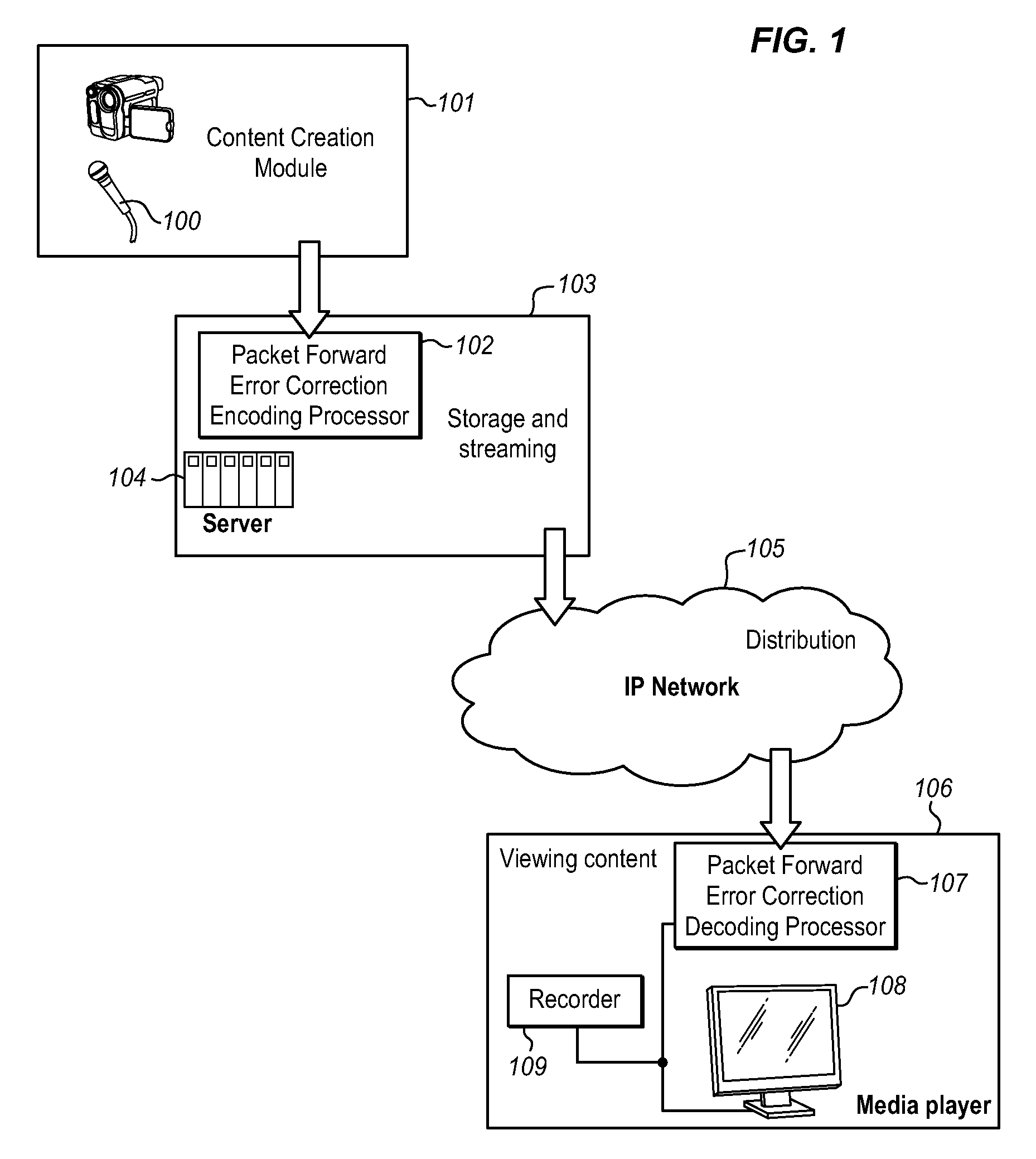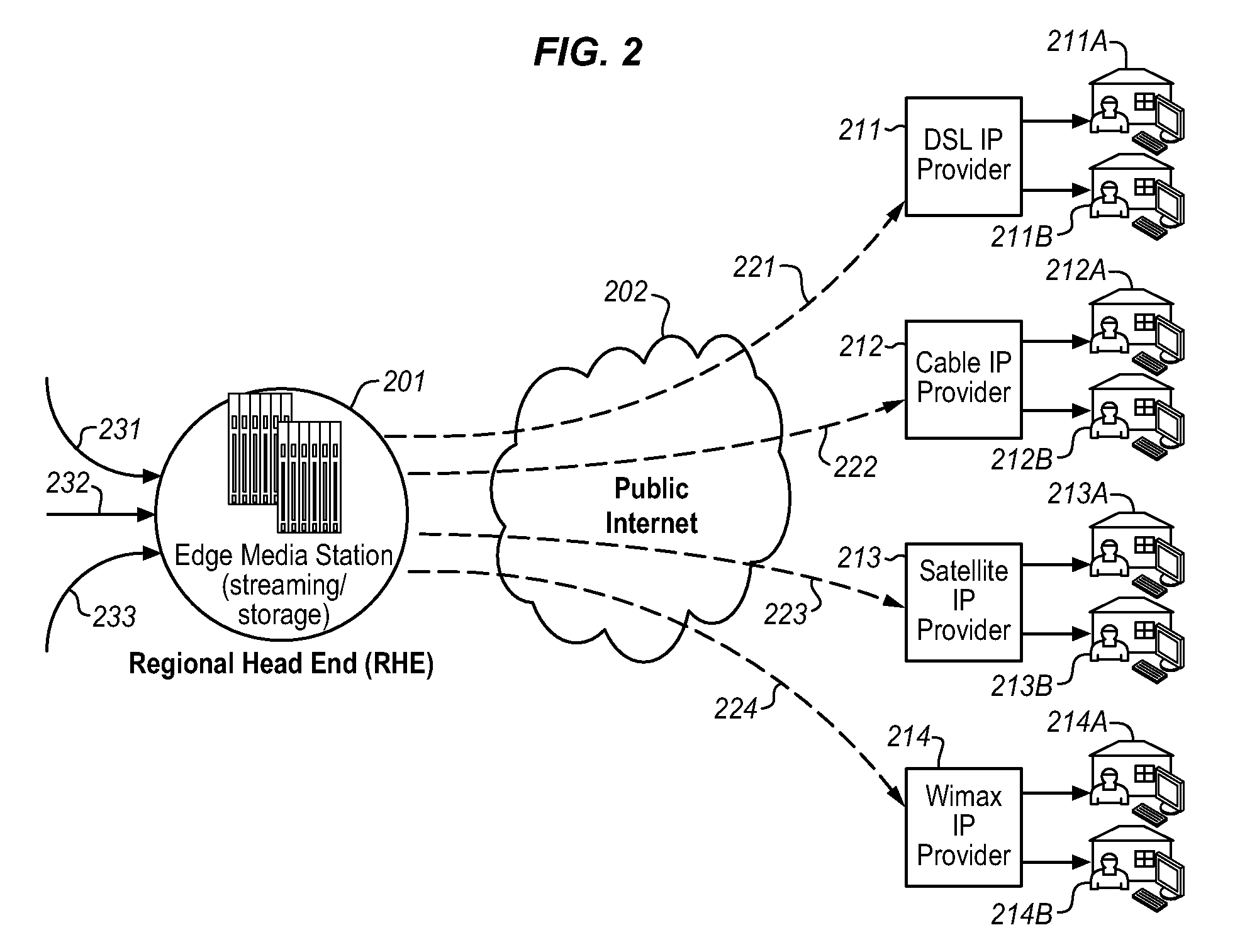Universal packet loss recovery system for delivery of real-time streaming multimedia content over packet-switched networks
a packet loss recovery and multimedia content technology, applied in the field of data transmission networks, can solve the problems of serious degradation of streaming video quality, inability to reliably deliver continuous streams of data, and impaired end-to-end streaming video quality, so as to improve link transmission reliability and reliable end-to-end network delivery
- Summary
- Abstract
- Description
- Claims
- Application Information
AI Technical Summary
Benefits of technology
Problems solved by technology
Method used
Image
Examples
Embodiment Construction
[0034]FIG. 1 illustrates, in block diagram form, a typical data communication network in which the present Universal Packet Loss Recovery System is implemented. The encoding processing 102 of the Packet Forward Error Correction Coding scheme is carried out at the streaming server end 103, and the decoding processing 107 of the Packet Forward Error Correction Coding scheme is carried out at the media player end 106. In particular, the multimedia content from sources 100 in the content creation module 101 is delivered to the storage and streaming module 103, where server(s) 104 manage the distribution and delivery of the encoded content to the users via the Internet Protocol network 105. The user site 106 includes a decoder 107 which converts the encoded content received from server 104 into the reconstituted multimedia content for display by media player 108 or storage on a media recorder 109 for later viewing by the user. This architecture is simply exemplary of a typical environmen...
PUM
 Login to View More
Login to View More Abstract
Description
Claims
Application Information
 Login to View More
Login to View More - R&D
- Intellectual Property
- Life Sciences
- Materials
- Tech Scout
- Unparalleled Data Quality
- Higher Quality Content
- 60% Fewer Hallucinations
Browse by: Latest US Patents, China's latest patents, Technical Efficacy Thesaurus, Application Domain, Technology Topic, Popular Technical Reports.
© 2025 PatSnap. All rights reserved.Legal|Privacy policy|Modern Slavery Act Transparency Statement|Sitemap|About US| Contact US: help@patsnap.com



